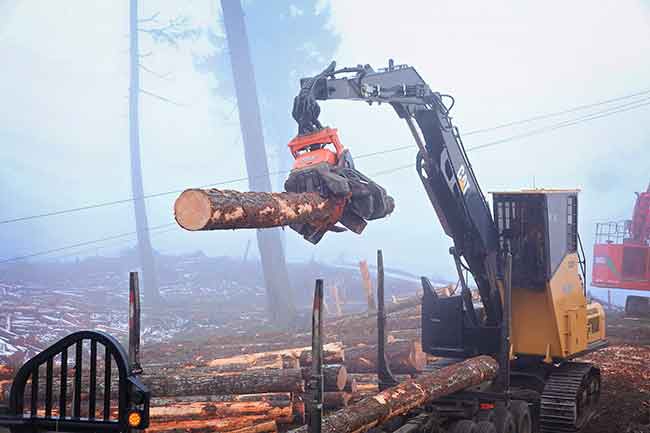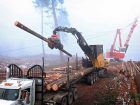
Features
Harvesting
Logging Profiles
New harvesting gear reduces handling
Oct. 13, 2016 - Logging operations across B.C. have their share of challenges – increased competition for fibre on shrinking allowable annual cuts (AAC); obtaining funding to invest in the latest technologies; and managing an aging workforce with a shortage of capable young men and women coming into the business, to name just a few. One of the ways successful logging operations overcome these obstacles is by finding new efficiencies in their operations, whenever possible.
October 13, 2016 By Andrew Snook
 Logging operations across B.C. have their share of challenges
Logging operations across B.C. have their share of challengesSo when Island Timberlands, a Nanaimo, B.C.-based private timberlands business specializing in exporting logs, decided to invest in new harvesting gear, one of the company’s primary focuses was looking at ways to improve its log handling operations.
Island Timberlands harvests about 2 million cubic metres of logs per year, when you include the logs harvested by the contractors it hires.
The majority of the company’s harvests are comprised of Douglas fir, hemlock, balsam and western red cedar; in addition to smaller quantities of yellow cedar, red alder and Sitka spruce. The company’s own logging crews harvest approximately 25 per cent of that – they logged 487,000 cubic metres in 2015, a significant amount of the total production.
To help the company improve its log handling operations, it decided to invest in a Southstar QS605 grapple processor.
“We’re trying to reduce one step in our logging operations,” explains Ben Lattanzi, maintenance and purchasing manager for Island Timberlands.
Before purchasing the grapple processor, the company’s log handling operation had to take additional steps, which took away from its bottom line. Logs were being harvested by a grapple yarder, then handled a second time by a processor operator, who processed the logs, and then a third time by a log loader that placed the logs on a truck.
“We wanted to reduce that by one step, and what better way to do that then by using a head that can process the logs and load them,” Lattanzi says. “It’s a price reduction that makes your logging a lot more profitable and more efficient.”
By investing in a grapple processor, the harvesting operation is now able to free up its log loader for other work.
“This way, the operator can process the wood and call for trucks at his leisure and you don’t have a log loader tied up,” Lattanzi says.
By purchasing a grapple processor, Lattanzi estimates that the company is experiencing some significant cost savings.
“You’re looking at a [log loader] machine that’s roughly $200 an hour to operate,” he says. “At 10 hours a day, that log loader is sitting there [often idle, waiting for processed wood to load] at $2,000 a day, so you’re saving a pretty good penny over a full year.”
Lattanzi notes that the company’s new processing head won’t just be used for improving the loading process, and will also get additional productivity through its versatility in the woods.
“The Island is a lot steeper,” he says. “This investment is good because a lot of the time we put our grapple yarder on steep ground and the operator has no place to pile the logs, so you have to take them away. With this machine, we can process them, take them out of the way and load them. We don’t have to wait for someone else to come and move them, so we can keep going.”
With the price volatility that comes with working in the commodities markets, making sure one’s harvesting operation runs as lean as possible is just good business.
“It’s all about handling the wood less,” Lattanzi says. “The less you handle the wood, the more efficient you are. With the changing markets and pricing, it’s important.”
Print this page

